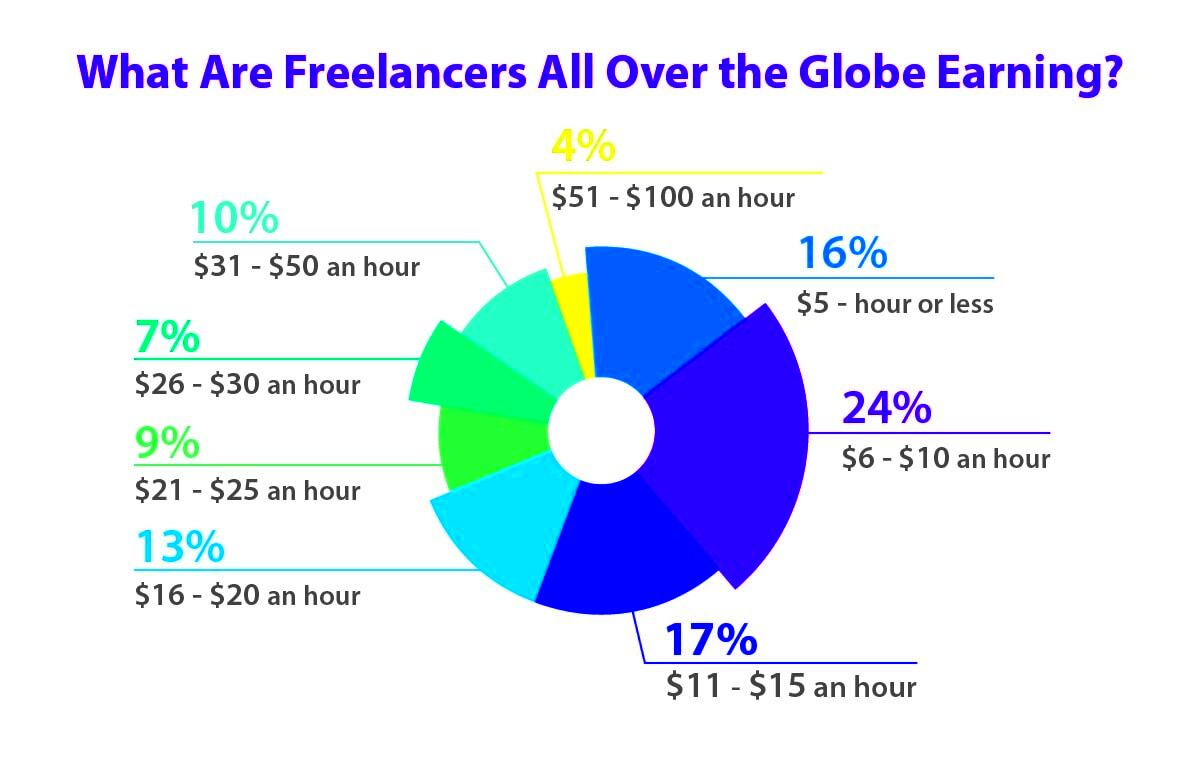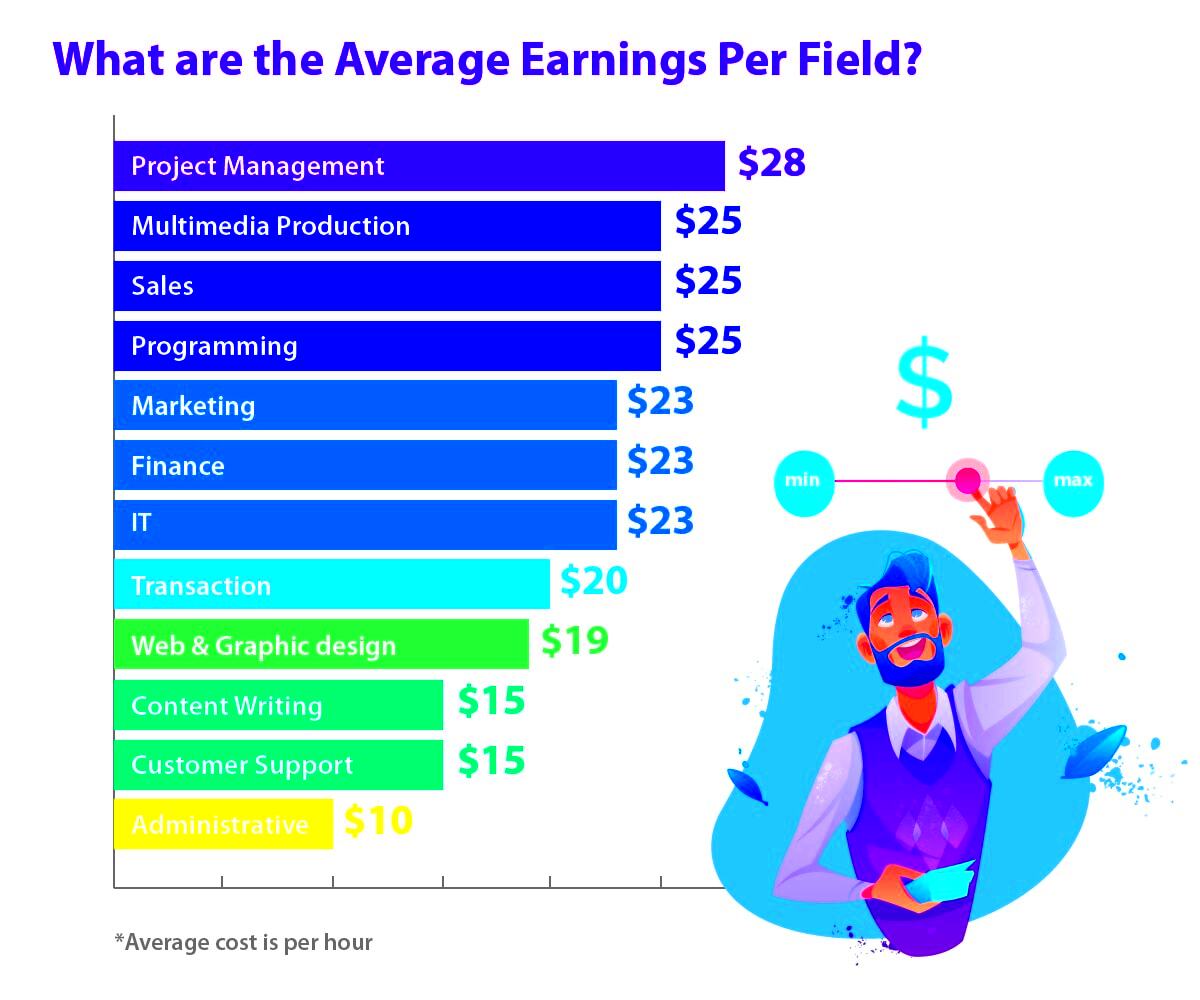Freelance marketers are paid based on their skills, experience, and the specific services they offer. Unlike traditional jobs with fixed salaries, freelance marketing rates can vary widely. Understanding what influences these rates can help both marketers and clients set fair expectations. This article explores the various factors that impact freelance marketing rates, typical pricing models, and how marketers earn based on their work type and experience.
Factors Affecting Freelance Marketer Rates

Several factors play a role in determining how much freelance marketers charge. Rates can be influenced by personal skills, market demand, and the nature of the work. Here are some of the main factors:
- Experience Level: Beginner marketers typically charge less, while experienced marketers with proven results can command higher rates.
- Service Specialization: Specialists in areas like SEO, email marketing, or social media management may charge more due to the specialized knowledge required.
- Client Budget and Project Scope: Larger, complex projects with higher budgets usually require a higher level of expertise and, consequently, higher fees.
- Geographic Location: Location can affect rates, with marketers in high-cost living areas often charging more than those in areas with lower living costs.
- Market Demand: High-demand skills such as digital advertising or content strategy often allow for higher rates due to increased demand.
Understanding these factors can help freelance marketers set competitive rates and also help clients choose the right marketer for their needs.
Also Read This: How to Improve Average Selling Price on Fiverr
Common Pricing Models for Freelance Marketing Services

Freelance marketers typically choose pricing models based on their services and the type of clients they work with. Here are some common pricing structures:
| Pricing Model | Description |
|---|---|
| Hourly Rate | Charges based on the time spent on a project. Often used for consulting or flexible, short-term projects. |
| Project-Based Pricing | A flat fee is charged for an entire project. This model is common for well-defined projects with clear goals. |
| Retainer Model | Clients pay a regular fee for ongoing work. This model provides stable income and is often used for long-term marketing support. |
| Performance-Based Pricing | Charges are based on results, such as leads generated or conversions. This model is riskier but can lead to higher earnings if results are achieved. |
Choosing the right pricing model helps marketers meet client expectations and manage their workload effectively.
Also Read This: How to Mutually Cancel an Order on Fiverr
Average Earnings Based on Experience Level

As with many professions, a freelance marketer's earnings typically grow with experience. Beginners start out at lower rates, while more experienced marketers can command higher fees due to their proven track record. Here's a general breakdown of average earnings based on experience level:
- Entry-Level (0-2 years): New freelance marketers generally charge lower rates, often ranging from $15 to $30 per hour. They may also start with project-based pricing, earning about $200 to $500 for smaller projects.
- Intermediate (3-5 years): Marketers with a few years of experience can expect to charge between $30 to $75 per hour, or $500 to $2,000 per project, depending on the complexity.
- Experienced (5+ years): Seasoned freelancers, particularly those with a strong portfolio, can charge anywhere from $75 to $150 per hour or more. For larger projects, they may earn $3,000 to $10,000 or beyond.
- Top Experts or Consultants: Highly skilled marketers in niche industries or those offering consulting services can charge $200+ per hour, and their project fees can reach $20,000 or higher.
It's important to note that these figures can vary depending on factors like location, service specialization, and demand in the market. As you gain experience and improve your skills, your potential for higher earnings increases significantly.
Also Read This: How to Make $1000 a Month on Fiverr
Industry-Specific Rates in Freelance Marketing
Freelance marketing rates can vary widely across different industries, as each one has its own set of needs and budgets. Here’s an overview of common industries and the typical rates you can expect for freelance marketing services:
| Industry | Typical Rate Range |
|---|---|
| Healthcare | $50 - $150 per hour |
| Technology | $60 - $120 per hour |
| Real Estate | $40 - $100 per hour |
| Retail | $30 - $75 per hour |
| Finance | $75 - $200 per hour |
| Entertainment | $40 - $100 per hour |
Rates in these industries depend on the level of competition, the size of the companies, and how complex the marketing campaigns are. Highly specialized industries, like finance or healthcare, tend to pay higher rates due to the specialized knowledge required. Freelance marketers can adjust their rates based on the industry they choose to focus on and their experience within that field.
Also Read This: Understanding Repeat Buyers on Fiverr: What They Are and Why They Matter
How Freelance Marketers Set Their Prices
Setting the right price for your freelance marketing services can be tricky, especially when you're starting out. The key to success is finding a balance between what the market will bear and what reflects the value you bring to the table. Here’s a step-by-step guide on how freelance marketers typically set their prices:
- Know Your Worth: Start by evaluating your skills, experience, and the value you provide. If you have niche skills like SEO expertise or advanced social media management, you can charge a premium.
- Research the Market: Look at what other freelancers in your niche are charging. You can check websites like Fiverr or Upwork, or even talk to fellow marketers to get an idea of the going rates in your industry.
- Factor in Your Expenses: Don’t forget to account for your business expenses, such as software tools, advertising, and taxes. Make sure your rates cover these costs while still providing a reasonable profit.
- Consider the Scope of Work: A larger, more complex project should command a higher fee. If you're offering services like ongoing marketing strategy or project management, higher rates are appropriate.
- Offer Tiered Pricing: For some services, it's useful to offer multiple pricing tiers. For example, basic services can be at a lower rate, while more comprehensive packages can be priced higher. This way, clients can choose based on their budget.
- Test and Adjust: Don’t be afraid to adjust your prices based on client feedback and market trends. If you’re getting more work than you can handle, you might raise your rates. If you’re struggling to find clients, consider offering a discount to build your portfolio.
Ultimately, your pricing should reflect the quality of your work, the demand for your services, and the results you deliver to your clients. By setting fair and competitive prices, you’ll be able to attract the right clients and build a successful freelance marketing business.
Also Read This: How Many Impressions is Good on Fiverr?
Ways Freelancers Can Increase Their Earnings
Freelance marketers have the flexibility to boost their income by adopting various strategies. Whether you're just starting out or already established in the field, there are several ways to increase your earnings. Here are some practical tips:
- Expand Your Skillset: Continuously learning new skills or certifications can make you more valuable to clients. Specializing in high-demand areas like SEO, Google Ads, or social media advertising can lead to higher-paying opportunities.
- Offer Value-Added Services: If you already offer a basic marketing service, consider adding extra services that complement your main offering. For example, if you're doing social media management, offer additional content creation or analytics reports.
- Increase Your Rates Gradually: As you gain experience and build your portfolio, don’t be afraid to raise your rates. Inform your clients ahead of time about rate increases and explain the value you’ve provided that justifies the rise.
- Target High-Value Clients: Focus on finding clients with bigger budgets or long-term contracts. Industries like healthcare, finance, and technology are often willing to pay more for quality marketing services.
- Upsell and Cross-Sell Services: Upselling can be as simple as offering premium packages or ongoing support services to existing clients. Cross-selling involves suggesting complementary services like SEO to clients who initially hired you for content writing.
- Work with Multiple Clients: Diversify your income streams by working with different clients across various industries. This helps avoid putting all your eggs in one basket and reduces the risk of income loss if one client leaves.
By combining these strategies, freelance marketers can increase their earnings over time while offering greater value to clients.
Also Read This: How to Start Freelancing on Fiverr
Conclusion on Freelance Marketing Rates and Income
Freelance marketing offers a great deal of potential for earnings, but the income you can generate depends on a number of factors. Your experience, the services you offer, and how well you manage your business all play a significant role in determining your rates. While beginner rates are lower, as you gain more experience, specialize in high-demand skills, and expand your client base, your potential for higher earnings increases significantly.
Freelance marketers have the flexibility to set their own prices, but with this freedom comes the responsibility to stay competitive and deliver value. The key to long-term success is not only setting the right rates but also continuously improving your skills and business practices. By following industry trends, targeting higher-paying clients, and adapting your pricing model to your expertise, you can steadily grow your freelance marketing income.
Frequently Asked Questions on Freelance Marketer Charges and Earnings
1. How do freelance marketers determine their hourly rate?
Freelance marketers usually set their hourly rate based on their experience, skillset, and the market demand. They may also factor in the costs of running their business, such as software subscriptions, advertising, and taxes.
2. Can I increase my rates as a freelancer?
Yes! As you gain more experience and demonstrate your value to clients, you can gradually increase your rates. It’s important to communicate these changes to your clients and explain the added value you’re offering.
3. How much can I earn as a beginner freelance marketer?
As a beginner, you can expect to charge anywhere from $15 to $30 per hour, depending on your niche. Entry-level project fees can range from $200 to $500, depending on the scope of work.
4. Do freelance marketers need to set their own rates?
Yes, freelance marketers are responsible for determining their own rates. However, it’s important to research what others in your niche are charging and consider factors like location, experience, and service specialization.
5. How can I get clients who are willing to pay higher rates?
To attract higher-paying clients, focus on targeting industries with bigger budgets like healthcare, finance, or technology. You can also specialize in a high-demand skill and build a portfolio that demonstrates your expertise.
6. What is the difference between hourly rates and project-based pricing?
Hourly rates are based on the time spent working on a task, while project-based pricing is a flat fee for completing a specific project. Project-based pricing is often preferred for well-defined tasks, while hourly rates are useful for ongoing work or consulting.




